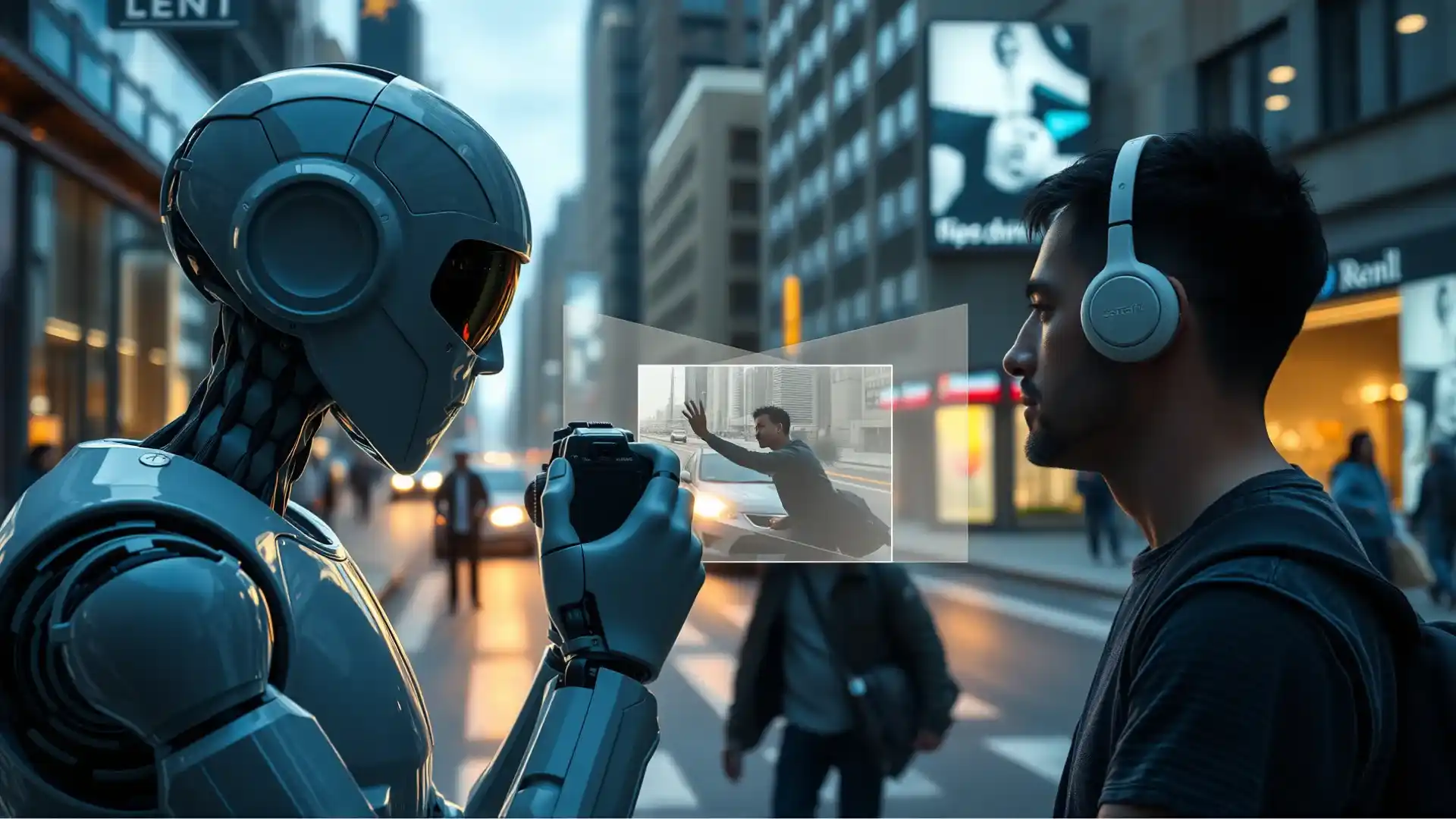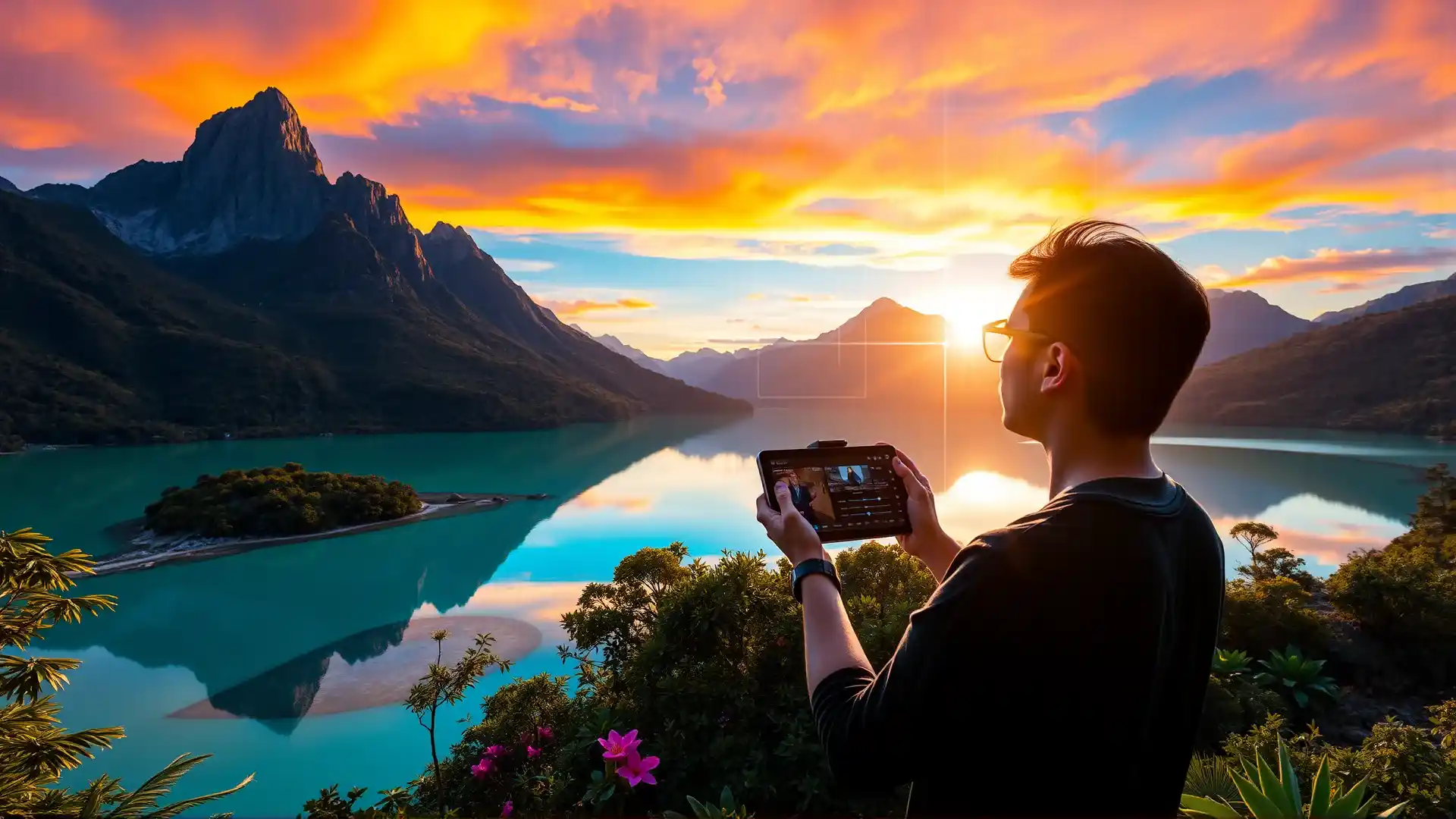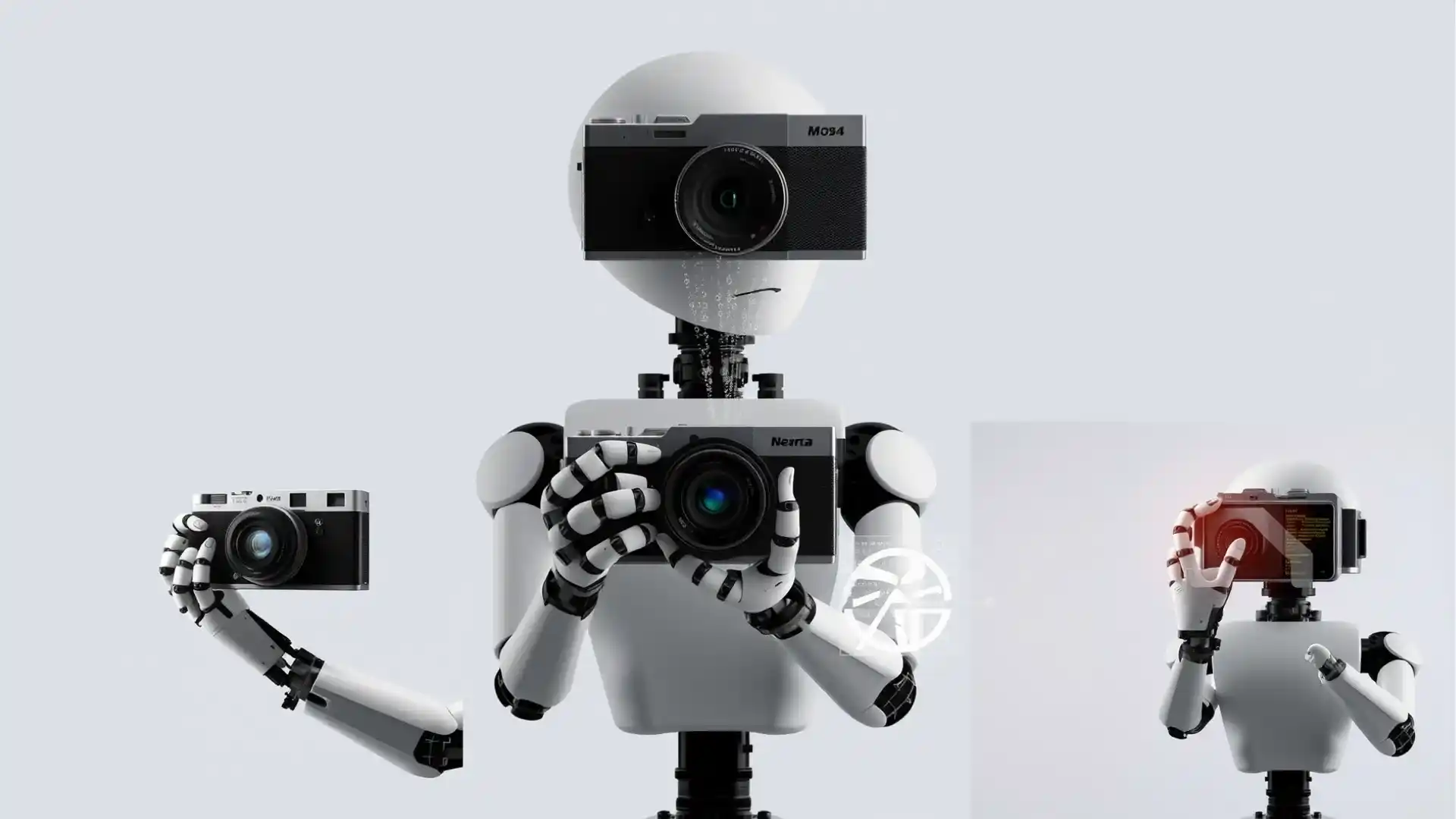Table of Contents
Throughout history, photography has been a marriage of science and art: Progress in photographic technologies is continuously changing the landscape of realism. From the invention of the camera obscura to the digital revolution, it has been commending human creativity. Now, artificial intelligence is opening uncharted doors into this art world, redefining how we shoot, enhance, and even imagine images.
AI in photography is not just a tool; it becomes a highly creative co-designer. It empowers photographers and bargains under the range of possibilities that were once the domain of science fiction. This innovation also extends to Graphic Design Services, enabling designers to streamline workflows, enhance creativity, and produce stunning visuals with AI-driven tools. What does this mean for our future now? Let us explore AI’s influence on how post-processing and image generation occur, what can be opened, and the obstacles it poses.
Redefining Post-Processing with AI
Post-processing has always been an essential part of photography, converting raw images into polished masterpieces. Long ago, photographers spent hours using darkrooms or software to tweak every little thing. There were many intricate touches to every work that had to be perfected by hand, a very arduous process. The introduction of AI has revolutionized this process by automating things that once were time-consuming tasks while still opening the doorr to creative control.
Consider some tools of AI in photography that Adobe Photoshop offers, like Content-Aware Fill and Neural Filters. A couple of clicks will allow you to get rid of unwanted elements from an image, apply some age adjustments, or even change a subject’s facial expressions. According to Adobe, these AI elements improve operational efficiency for professional photographers by 60% for editing.
AI-based apps like Luminar Neo and Skylum are taking editing up a notch with simple one-click corrections. They analyze the image composition, lighting, and color balance and suggest improvements that may get close to manual edits. They’ve opened the floodgates for high-quality editing for hobbyists engrained in the art of informal editing right through to professionals demanding immaculate detail.
One of Luminar’s nifty tools, for instance, AI Sky Replacement, allows you to quickly replace dull skies for dramatic views in seconds and without any advanced masking skills. These sorts of features help the photographer concentrate on creativity rather than the technicalities of the process.

The Emergence of AI-Generated Images
This post-processing platform enhancement feels almost divine, while the fact that generative AI in photography can create images entirely new has an air of magic to it. Generative AI models like DALL·E and MidJourney allow users to create very photorealistic images from simple text prompts. This means there are implications not just for photography but also for the broader creative industries.
A glaring example of AI abilities in generating images is the application of GANs: Generative Adversarial Networks. These networks oblige two neural networks to compete with one another; the first one generates images, while the other critiques the generated image. This back-and-forth dialogue produces images so realistic that, at times, even they seem indistinguishable from the real photograph.
According to a report from Grand View Research, in 2022, the global generative AI market was valued at $10.63 billion and is likely to grow at a CAGR of 34.6% from 2023 to 2030, AI in photography will play a major role.
Images developed by AI technologies are increasingly making their way into advertising, product photography, and journalism. Companies can start generating realistic enough stock photos through AI in photography, without involving the use of cameras or photoshoots. This will work wonders in scenarios where logistics or costs might render traditional photography not the best option to consider.
Creativity Without Boundaries
One of the most exciting advantages of AI in photography is its power to spur creativity. Using tools such as DeepArt and Prisma, one can turn photographs into digital paintings based on the styles of famous artists like Van Gogh and Picasso. Photographers can easily work on different aesthetics, making hybrid art that combines photography with other forms of art.
AI in photography also allows for hyperrealistic imaging. With the help of neural networks, photographers can upsample low-resolution images, restoring details that had previously been lost. This is all the more crucial for archival work in that old photographs can be improved toward the original appearance.
Imagine taking a scene that doesn’t exist—AI in photography can do just that for you. For instance, landscape photographers now use AI tools to generate landscapes based on their imaginations or modify existing ones to match their vision. Such advances stretch the boundary of what can be done in photography.

Challenges and Ethical Dilemmas
AI in photography offers great possibilities without challenges. One of the main issues is authenticity. With these images being produced so well that they look very real, how would one tell the difference between what is real and what is not?
The deepfake problem, for example, has generated discussions on the ethics of AI-generated visuals. The Deeptrace Labs report from 2019 revealed that the number of deepfake videos online had nearly doubled compared to the previous year, reaching 14,678 by the end of 2019. A significant majority of these videos were non-consensual adult content, primarily targeting women.
Credit issues are there. Who owns AI-generated images, then? The originator of the prompt? The maker of the AI engine? Or, rather, the model on which the AI was trained? Mired in a gray area as the law struggles to catch up with digital technology, such queries find no shrill answers.
Another challenge is the homogeneity. This means if an AI tool allows you to follow certain predefined styles or edits for your images, more photographs may start to look alike, thus quenching individuality. Therefore, it will be a delicate balancing act between automation and personal aesthetic expression.
The Road Ahead
The road ahead, however, looks promising since AI in photography is only the beginning. More advanced models of AI will give rise to more avenues of creativity. For instance, we may see an AI that acknowledges the thoughts of the artist, suggesting shots within the imagination of the photographer.
A partnership between human photographers and AI is likely to blossom into a norm, with AI performing the technical stuff and humans narrating stories and filling emotions. Such partnership might be the beginning of a golden age of photography, unbounded by creative possibilities that dry out under the strife of technical limitations. Modern platforms like Renew Photo demonstrate how AI can elevate image enhancement, restoration, and editing while still preserving the photographer’s original artistic vision.
Economically, the rise of AI in photography is expected to boost growth across sectors. According to a PwC report, AI could add as much as $15.7 trillion to the global economy by 2030, with a big part being played by creative fields such as photography.

Conclusion
AI in photography is changing how we perceive images, from simplifying post-processing through enabling entirely new forms of visual art. Be it noise reduction, color correction, or object removal, it is fully automated for tedious tasks, allowing the photographer to focus entirely on their artistic and creative vision. An AI-powered software can peruse thousands of photographs in seconds and can suggest edits or create seamless photorealistic composites that would formerly have required the expert eye of a professional. There are challenges such as those related to ethics, copyright, and authenticity, but there are enormous opportunities to innovate and create.
As we embrace this technology that is on the verge of change, the key is to apply it responsibly and then allow the art of photography to flourish in the world where humans and machines create together. Be it a full-fledged photographer, an artist tinkering with new mediums, or merely someone with a smartphone and a dream, AI has something for everyone. It is democratizing creativity, allowing anyone to realize a personal vision and stretch the possibilities of what can be.
Ready to discover what AI in photography can do? The future of visual storytelling lies just a click away, ready to ask you to rethink your creative journey.